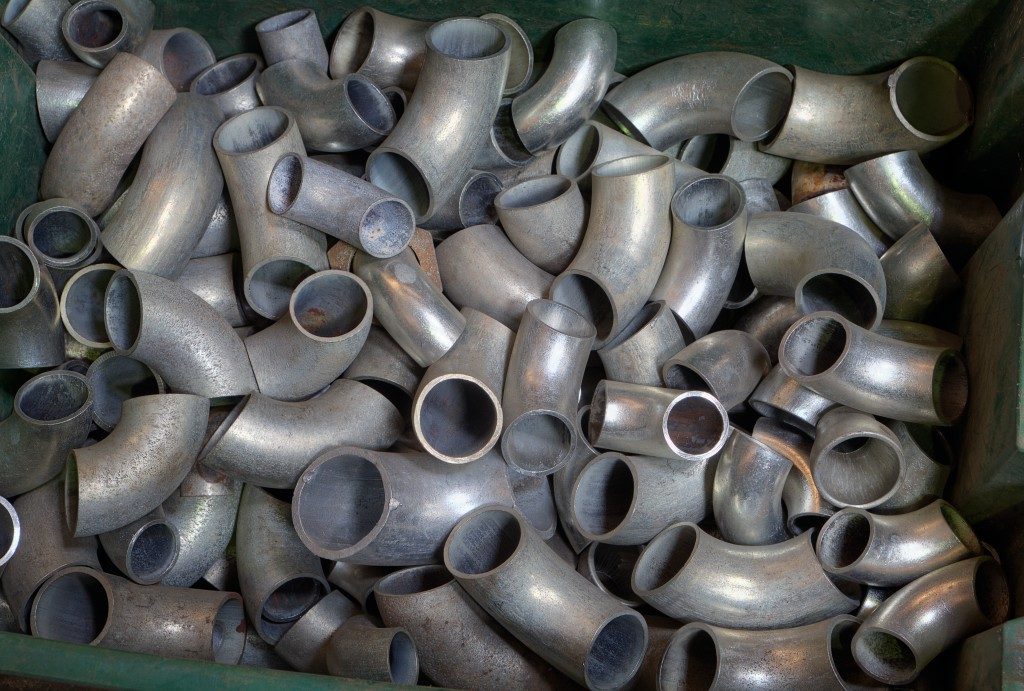Steel is the king of all construction materials. Because of this, steel is found in almost all industries. It is especially prevalent in the construction industry where it is used in many forms, such as steel plate, strip, open section and a standard open section, floor beams, plate girders, and cellular beams.
Steel can also be found at home, as well as in the medical field (in the form of medical tools and equipment), manufacturing, maritime transportation industry and even in space exploration. When it comes to possibilities, steel almost has no limits. Just ask steel pipe suppliers and they will tell you why steel is among their best-selling materials.
Composition
Being composed of two components, an alloy of iron with carbon content, allows steel to be recycled without losing its attributes. And being abundant in nature allows for large quantities of steel to be produced.
Manufacture
The evolution of manufacturing processes has opened up new possibilities for steel buyers, and with this came unique needs to address the needs of a myriad of industries. Here are the four popular types of steel pipes:
Carbon Steel
When you add carbon to iron, you create steel. Iron, on its own, is weak. Carbon has been discovered in the modern industry to be the most ideal additive to ferrous material. Ferrous material is considered as carbon steel when it is mainly composed of:
- 1.65% manganese
- 0.60% silicon
- 0.60% copper
Carbon steel pipe is widely used in many industries because it is strong, highly workable, and relatively affordable. Its limitations are extreme temperatures and high-pressure use (it is less resistant to stress because of the insufficient alloying elements).
Alloy Steel

Alloy steel remains true to its name: it has alloying elements of a specific amount. When alloying elements are added, steel becomes stronger and more stress- and impact-resistant. Among the most common alloying elements are chromium, molybdenum, nickel, silicon, manganese, and copper. The possibilities of alloys and concentrations are limitless, and each combination has specific desired results.
For extreme conditions, whether hot or cold, the steel of high-alloy types is the preferred one. The combination of chemistry and correct heat application result in a strong yet yielding pipe that can withstand hard use. This is popular, specifically in the oil, gas, and power generation industries. Alloying elements also render steel more resistant to corrosion; therefore, chemical companies prefer alloy steel.
Stainless Steel
This simply means that products made from stainless steel do not rust. In stainless steel can be found the alloys chromium, manganese, nickel, silicon, and molybdenum. When these alloys interact with oxygen in water and air, they work together and form a thin but strong film that covers the steel and prevents corrosion. This is most popular in the medical field and food manufacturing industries where corrosion protection is crucial.
Tool Steel
This steel manufactures other types of steel into the requirements of an industry—whether it is product or equipment. Tool steel has very high concentrations of alloying materials, and when precisely heated, they give tool steel the following qualities:
- Incredibly strong
- Ductile
- Corrosion resistant
- Tough
- Able to retain cutting edges
- Able to retain shape in high temperatures
All these may sound Greek to you, but an understanding of the chemistry and metallurgy in steel pipe production will go a long way in helping you choose the right type you might need for your particular industry.






